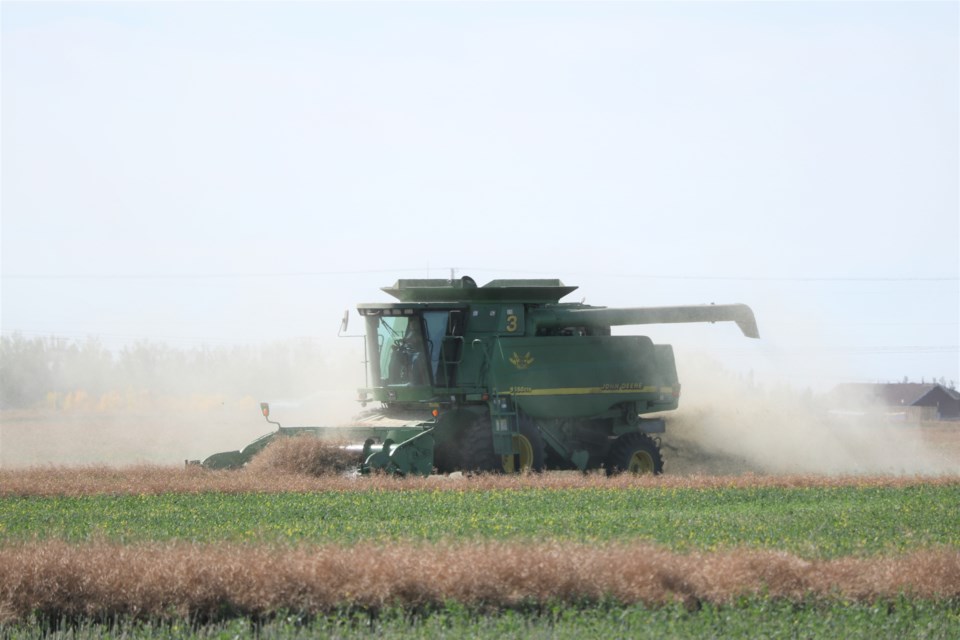BRANDON - Agricultural producers around the globe celebrated a critical crop last week with World Pulses Day on Feb. 10.
Pulses — chickpeas, dry beans, lentils, dry peas, lupins and other legumes — are a pivotal and growing global market, said Daryl Domitruk, the executive director for Manitoba Pulse and Soybean Growers.
This has been shown by the attention they have received from the United Nations. The plants are important from a nutritional perspective because they play a major role in the diets of people across the globe — especially in areas where meat is less readily available.
"They have a long history of providing protein and nutrition to these populations and lately their value in western diets, for example, populations like Canada, their value is a great source of protein and fibre," Domitruk said. "Their importance is truly global."
Each pulse is unique with one-of-a-kind characteristics, Domitruk said. Generally speaking, field peas thrive in a dry cycle, dry beans are a high management crop, fava beans are proving to be vigorous under a range of conditions and soybeans tend to thrive with a little extra moisture.
"There’s a real range within the legume family and it’s kind of a good thing. It can give farmers that power of choice," Domitruk said.
The majority of agronomists recommend having crop rotations that include legumes in combination with a cereal crop.
Manitoba Pulse and Soybeans Growers are collaborating with other organizations to ensure people in the industry and the population at large are aware of three major things about pulses: the nutritional value of the plants, ensuring consumers and industry players are aware of the affordability of pulses as a source for protein, and the value of the sustainability of the crops.
It has been an exciting year for pulse growers in Manitoba with the addition of the world’s largest pea protein plant constructed by Roquette in Portage la Prairie, and the MERIT Functional Foods Corporation plant in Winnipeg.
"Manufacturing foods from the basic crops that we grow here is a real economic kick-starter, especially for the rural economy," Domitruk said. "It is an exciting time and it is an interesting time."
The province is growing its pulse industry, he said, noting Manitoba is not a big producer of pulses and soybeans compared to other provinces. Saskatchewan and Alberta produce greater quantities of pulses, while Ontario produces more soybeans.
"If we wanted to really get the maximum goodness out of these crops having more food processing is a really good incentive. There are new local markets for farmers, so it’s an incentive for farmers to look at these crops as viable businesses on their farms," Domitruk said.
The growing processing industry is solidifying market demands, giving farmers the confidence to set aside a year for a legume knowing there will flexibility in the market.
Manitoba boasts a dry bean industry that dates back decades. It was concentrated in certain areas of the province and saw the products being cleaned, dried and exported. Over time, there have been small businesses that have processed peas in southwest Manitoba, and there have been areas that on a small scale cleaned and bagged various pulses.
The recent construction of the Roquette and MERIT plants marks the next major step for the industry and a movement toward a large industrial economy of scale processing.
"It really is a function of the growing global appetite for protein isolate," Domitruk said.
The latest generation of processing is about fractioning peas and feeding the global market for pea protein isolates, bringing a whole other level of sophistication in food processing.
He noted many pulses also have a lower carbon footprint compared to other foods, because they are able to work with microbes in the soil to acquire nitrogen nutrition through the natural process of symbiotic nitrogen fixation, adding to their desirability as a crop.
"The bottom line is they do not require the application of synthetic nitrogen fertilizer, which is one of the larger contributors to greenhouse gas emissions in modern agriculture," Domitruk said.
On the economic side, these naturally occurring processes help reduce the bill farmers have to pay for crop nutrition.
"Economics is a huge part of the sustainability equation," Domitruk said. "In addition to the environmental side where we are reducing greenhouse gas emissions, there’s also an upside to farm economics from reduced costs for fertilizer purchases."
Ben Martens, of the family-run farm Martens Charolais and Seed in Boissevain, described pulses as a "good news story" in terms of sustainability because they produce their own nitrogen on the farm to a large extent. Martens currently sits on the board of directors for the Manitoba Pulse and Soybean Growers.
He introduced the first pulse into the farm’s crop rotation after learning about the plan from Manitoba Ag. At the time, they were referred to as a special crop.
It is a careful balance of choosing which plant to grow each year.
Martens has set up a rotation at the farm and is trying to grow a pulse every three or four years. He traditionally grows cereal and canola, along with a pulse. He developed a system that works well on the farm and a focus has been on black beans for the past 10 or 20 years.
"You can’t grow pulses too often or else you run into problems," Martens said.
The major advantage of pulses and soybeans is that they are quite sustainable based on fertilizer requirements — an important attribute given growing environmental concerns around the world.
Manitoba Pulse and Soybean growers are hard at work, helping the pulse industry grow, he said, and most of the growers on the board are volunteers. The organization serves as a pivotal area where important research initiatives are taking place.
"It’s a way for producers to get involved, but it is also important that everyone realize the work that producers are doing because it’s there for everybody — the research, the benefits, the knowledge we’ve gained," Martens said.





